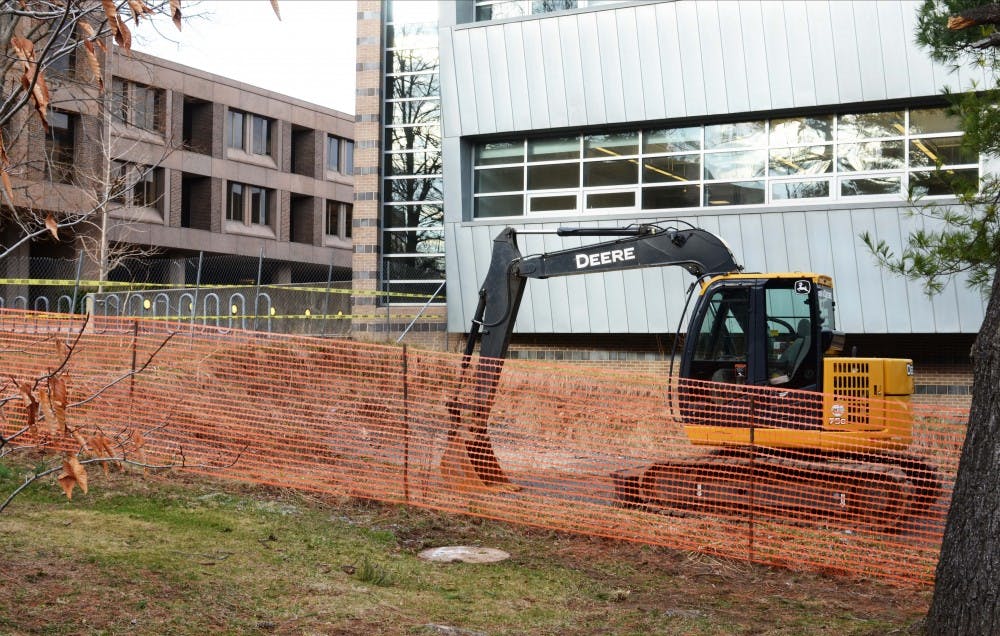The University is reassessing the efficiency of Jadwin Hall, which houses the physics department, as part of an effort to reduce its greenhouse gas emission rates to 1990 levels by 2020.
The University’s greenhouse gas emission totaled 95,455 metric tons in 1990.Emissions rose by approximately 20,000 over about a 20-year period, reaching a high in 2008.
One major renovation that recently took place in Jadwin was the replacement of air handling systems and duct work. Renovations began in 2009 and are 95 percent complete, according to the Times of Trenton.
“Air handlers in the basement were at the end of their useful life. You cannot occupy the building if the air handlers are not working,” Program Manager with the Office of Design and Construction Mark Wilson said. To combat this problem, a penthouse was built on the roof of Jadwin with brand new air handlers, and the old air handlers were removed from the basement.
Project Manager of the Office of Design and Construction Catherine Altadonna said that Jadwin needs a constant supply of fresh air to function as a lab but that this process is very intensive because it involves warming or cooling air from outside. The new air handlers ameliorate this problem by performing heat recovery.
“We are taking advantage of the energy that we already paid for and recycling it back into the building,” Wilson said.
Altadonna noted that the new air handlers also reduce the noise and vibrations that were unfavorable to physics experiments.

Another renovation that took place in Jadwin was the installation of chilled beams, which Wilson explained are essentially radiators that run in reverse. Due to the natural buoyancy of air, these chilled beams must be placed methodically in ceilings to cool warm air as it rises.
“Instead of running warm water through the radiator to heat the room, we run cool water through, and it cools the room,” Wilson said.
The University also installed daylight-harvesting light systems. Daylight-harvesting light systems calculate the amount of daylight that hits a work surface and then adjust the artificial light accordingly to reduce electricity usage.
Wilson explained that the University decided to renovate Jadwin after systematically identifying the buildings on campus that use the most energy. Jadwin, built in 1968, caught much attention.

Altadonna explained that Jadwin, now primarily an administrative building, was originally used more for science and was built at a time when energy was a less prevalent issue.
“Energy was considerably less expensive in the ’60s, so it was not as critical of a conversation,” Altadonna said.
Pavel Shibayev '15, president of the Princeton Society of Physics Students, said that he likes the Jadwin renovations overall.
“I think the physics department and administrators have really done their best in trying to keep the building up to date and sufficiently modernized,” he said.
However, Shibayev said there is still room for improvement in several locations, starting with the basement.
“None of the ceilings in the basement are covered; it looks more like a factory rather than a high-quality research institution in that regard,” he said.
Shibayev also noted that there is some outdated equipment in the fourth floor core lab rooms.
Wilson explained that “there are certainly other buildings that the University would love to tackle. The schedule is indeterminate at this point; this is key to the long-term sustainable efforts of the University, absolutely.”
Director of the Office of Sustainability Shana Weber explained that the University will face the challenge of reducing its carbon footprint as new infrastructure continues to be built. She noted that although the University has added over half a million square feet of new building space since 2008, it is still tracking very well for the goal.
The University’s “commitment is to reduce our absolute emission numbers regardless of how many more students and employees we have or how many more buildings we build,” Weber said.
Correction: Due to an editing error, an earlier version of this article did not properly identifyPavel Shibayev'15. The 'Prince' regrets the error.








